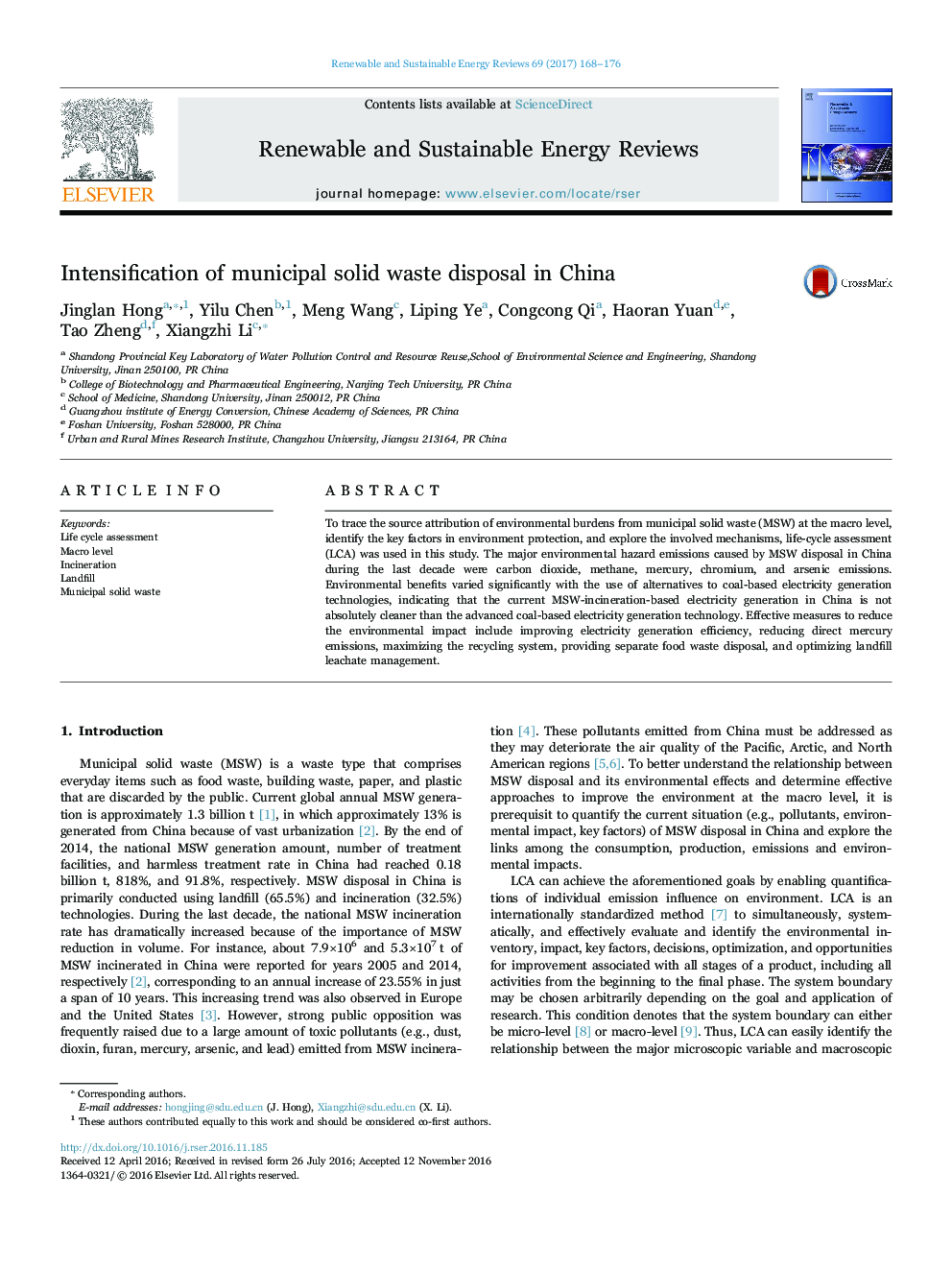| Article ID | Journal | Published Year | Pages | File Type |
|---|---|---|---|---|
| 5483322 | Renewable and Sustainable Energy Reviews | 2017 | 9 Pages |
Abstract
To trace the source attribution of environmental burdens from municipal solid waste (MSW) at the macro level, identify the key factors in environment protection, and explore the involved mechanisms, life-cycle assessment (LCA) was used in this study. The major environmental hazard emissions caused by MSW disposal in China during the last decade were carbon dioxide, methane, mercury, chromium, and arsenic emissions. Environmental benefits varied significantly with the use of alternatives to coal-based electricity generation technologies, indicating that the current MSW-incineration-based electricity generation in China is not absolutely cleaner than the advanced coal-based electricity generation technology. Effective measures to reduce the environmental impact include improving electricity generation efficiency, reducing direct mercury emissions, maximizing the recycling system, providing separate food waste disposal, and optimizing landfill leachate management.
Related Topics
Physical Sciences and Engineering
Energy
Renewable Energy, Sustainability and the Environment
Authors
Jinglan Hong, Yilu Chen, Meng Wang, Liping Ye, Congcong Qi, Haoran Yuan, Tao Zheng, Xiangzhi Li,
